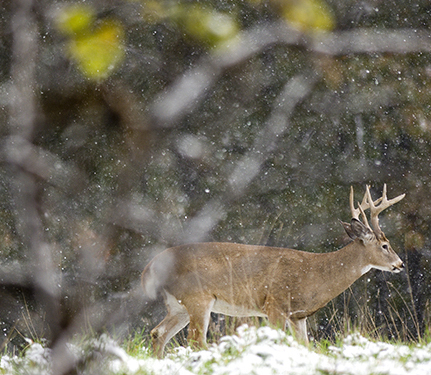Michigan Deer Management Against the Odds
By Glen Wunderlich
Outdoor Columnist
Member Professional Outdoor Media Association
The DNR has issued its annual deer hunting forecast for this season and I had to chuckle a bit when I read it. Here, in part, is the forecast for the Southern Lower Peninsula (SLP):
The deer population in southern Michigan is expected to be similar to the past few years. Deer populations generally are far above DNR goals and fawns generally come in sets of twins and triplets. High numbers of antlerless permits are available again this year with the added flexibility to use private land permits throughout most of the SLP. Hunters are encouraged to harvest antlerless deer, especially on private land to bring populations closer to goals and to help address concerns of excessive crop damage and deer-vehicle collisions. “Landowners and hunters both play a critical role in deer management,” said Sara Schaefer, Southwestern Wildlife Management Unit supervisor.
What’s so funny about the statements is the fact that hunters are encouraged to harvest antlerless deer after the fee to do so has been increased by 50 percent. As mentioned last week, it’s not likely that any noteworthy reduction in the problematic herd will be achieved through its counter productive revenue enhancement strategy. So, when we hunters get an opportunity to balance the herd, it’s imperative that we do it right.
The proper number of deer for any given area is the most important principle of Quality Deer Management (QDM) and balanced sex ratios follow in importance. Kip Adams of Pennsylvania, a certified wildlife biologist and QDMA’s Director of Education & Outreach in the North has this to say: “…Some areas still have overabundant deer herds resulting from harvesting too few antlerless deer. Given that hunter numbers have declined, the average hunter is now asked to take more antlerless animals in overabundant deer situations. Unfortunately research shows there is a limit to the number of deer an individual hunter is willing to take annually. This limit is generally less than three deer, and given that one or two may be bucks, the number of antlerless deer is further reduced. One strategy to increase the impact of the antlerless harvest is to maximize harvest of adult does and minimize harvest of fawns.
Educating hunters on distinguishing fawns from adult deer and even separating buck and doe fawns in the field is a relatively simple matter. By observing head and body features and behavior, most hunters can accurately distinguish between fawns and adults and buck and doe fawns most of the time. I stress that last part because mistakes will happen. Specifically, focusing on adult does rather than buck fawns provides more meat for the table, helps balance the herd more quickly, and allows additional buck fawns to survive. More buck fawns means more yearling bucks the following year, which is good for balancing the adult sex ratio and for hunter satisfaction.”
Being able to distinguish does from button bucks is not always easy, but several thoughts come to mind: 1) Single antlerless deer are often button bucks (fawns) so take a close look for those little nubs on top of the head, and 2) Get the best binoculars you can afford. If you are after a mature doe, it’s best size them up when a group is together. Button bucks are typically larger than their sisters but are always smaller than their mothers. There is also good information in the DNR’s hunting guide that can aid hunters in the identification process.
In any case, if you are not sure, wait until you are.





